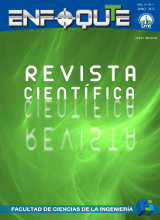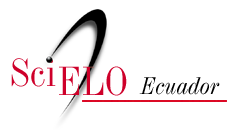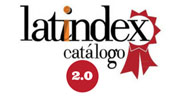ARTÍCULO RETIRADO: Diseño y construcción de un molde permanente utilizando un software por elementos finitos
DOI:
https://doi.org/10.29019/enfoqueute.v4n1.22Palabras clave:
MEF, molde metálico, sistema de alimentación, rechupes, moldura, mancuerna, solidificaciónResumen
(Recibido: 2012/11/07 - Aceptado: 2013/06/18 - Retirado: 2013/08/27)
Nota del Comité Editorial:
El presente artículo fue retirado luego de comprobarse que había sido publicado también en otra revista, violando las normas de Enfoque UTE. El Comité Editorial de Enfoque UTE toma esta decisión honrando las directivas de la comunidad científica, pese a tener una cesión de derechos firmada por el autor correspondiente.
El proyecto fue desarrollado con especificaciones técnicas de un método de elementos finitospara el cálculo de las variables de campo dentro de un contorno del molde de estudio yeligiendo un modelo matemático apropiado con la incorporación de software. El desarrollo fueuna aplicación físico-practica seleccionando una pieza de aluminio a ser construida, y seanaliza las funciones y solicitaciones a las que está sometida. Se diseña el molde metálico parala producción de las mencionadas piezas con la ayuda del software VULCAN basado en elMétodo de Elementos Finitos (MEF). La simulación se realiza en las tres etapas del proceso defusión: llenado, solidificación y, enfriamiento. En el llenado se considera que existenvelocidades que no produzcan mayores turbulencias y que las piezas se llenen completamente.En la Solidificación se analiza que el sistema de alimentación sea óptimo para que solidifiqueen última instancia y no lo hagan las piezas a producir, evitando así el defecto de falta dematerial en la cavidad del molde (rechupes). En el enfriamiento se analiza la presencia dedeformaciones y tensiones residuales. Paralelamente se validan los resultados de maneraanalítica. Con esta información se define la geometría final del molde metálico y se confirma laaleación con la que se construirá. Posteriormente se utiliza el sistema CAD-CAM-CAE para eldiseño y desarrollo del molde, y así llevar a cabo la construcción. En el molde terminado sevierte la aleación de aluminio seleccionada para obtener las piezas (mancuernas), y finalmenterealizar las pruebas y conclusiones.
Descargas
Descargas
Publicado
Número
Sección
Licencia
Los autores retienen todos sus derechos (© copyright).
- Los autores retienen sus derechos de marca y patente, y también sobre cualquier proceso o procedimiento descrito en el artículo.
- Los autores retienen el derecho de compartir, copiar, distribuir, ejecutar y comunicar públicamente el artículo publicado en Enfoque UTE (por ejemplo, colocarlo en un repositorio institucional o publicarlo en un libro), siempre que se dé el reconocimiento de su publicación inicial en la revista Enfoque UTE.
- Los autores retienen el derecho a hacer una posterior publicación de su trabajo, de utilizar el artículo o cualquier parte de aquel (por ejemplo: una compilación de sus trabajos, notas para conferencias, tesis, o para un libro), siempre que indiquen la fuente de publicación (autores del trabajo, revista, volumen, número y fecha).
























